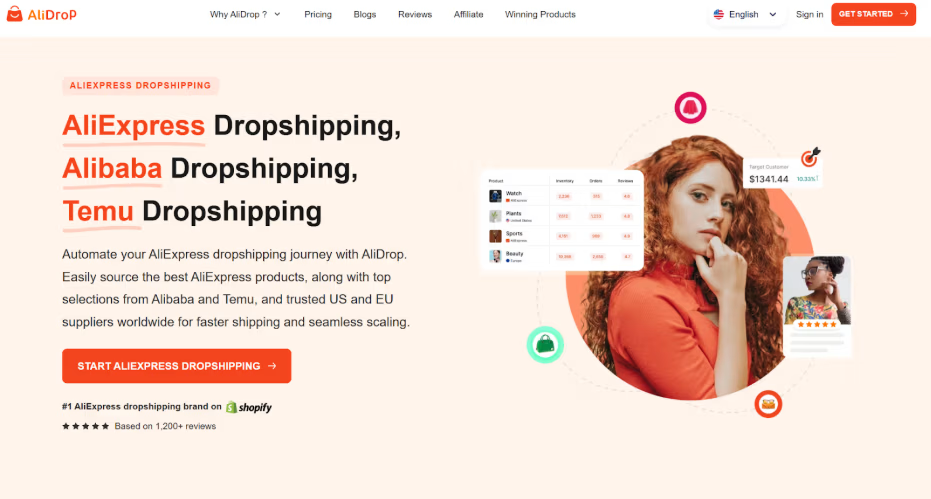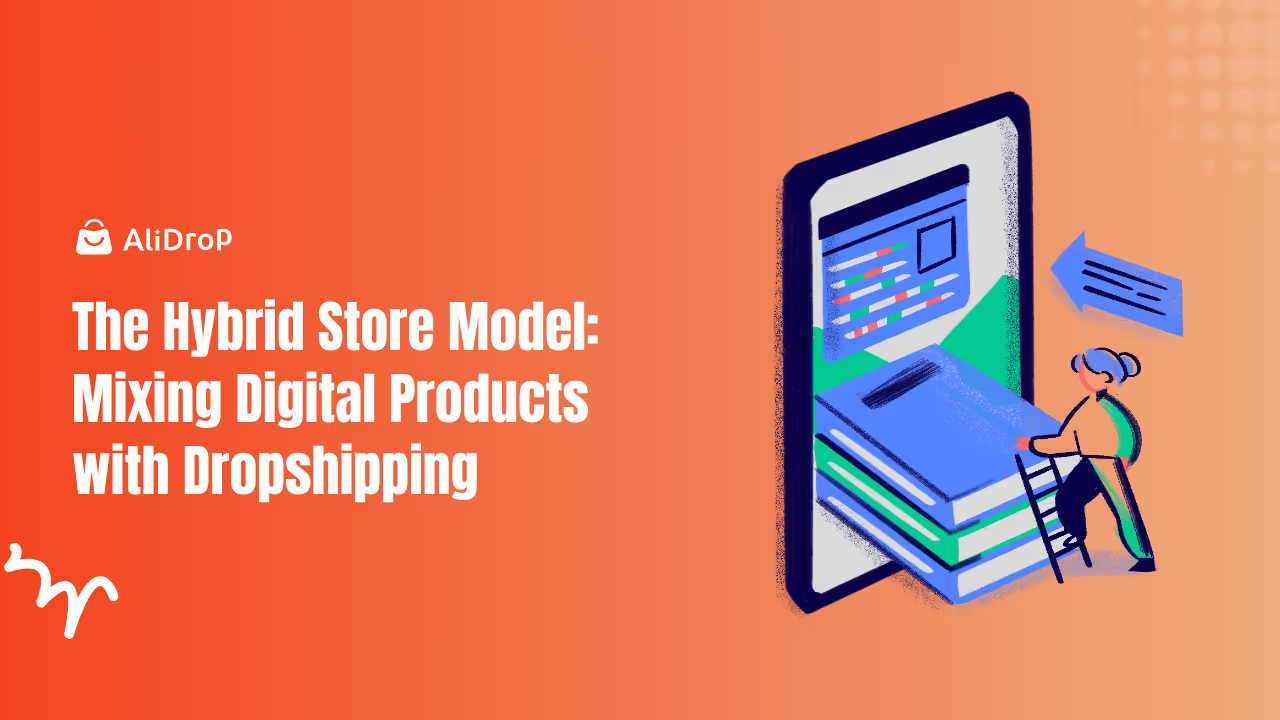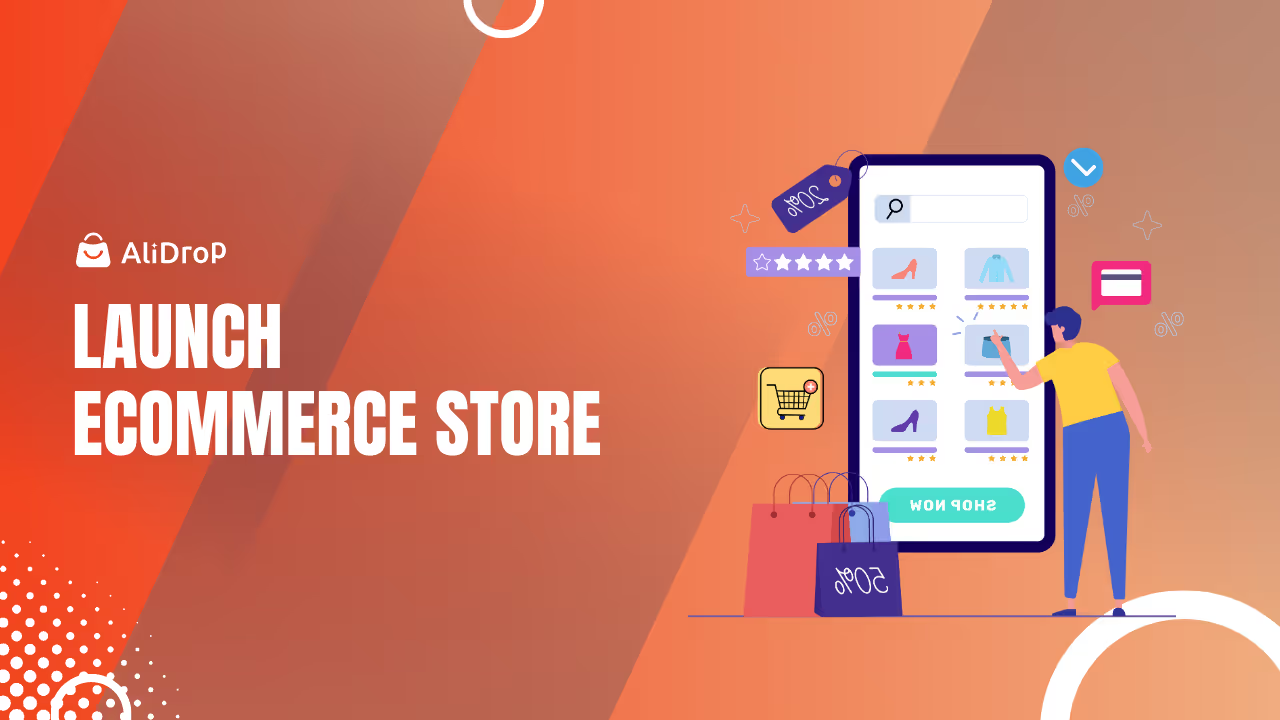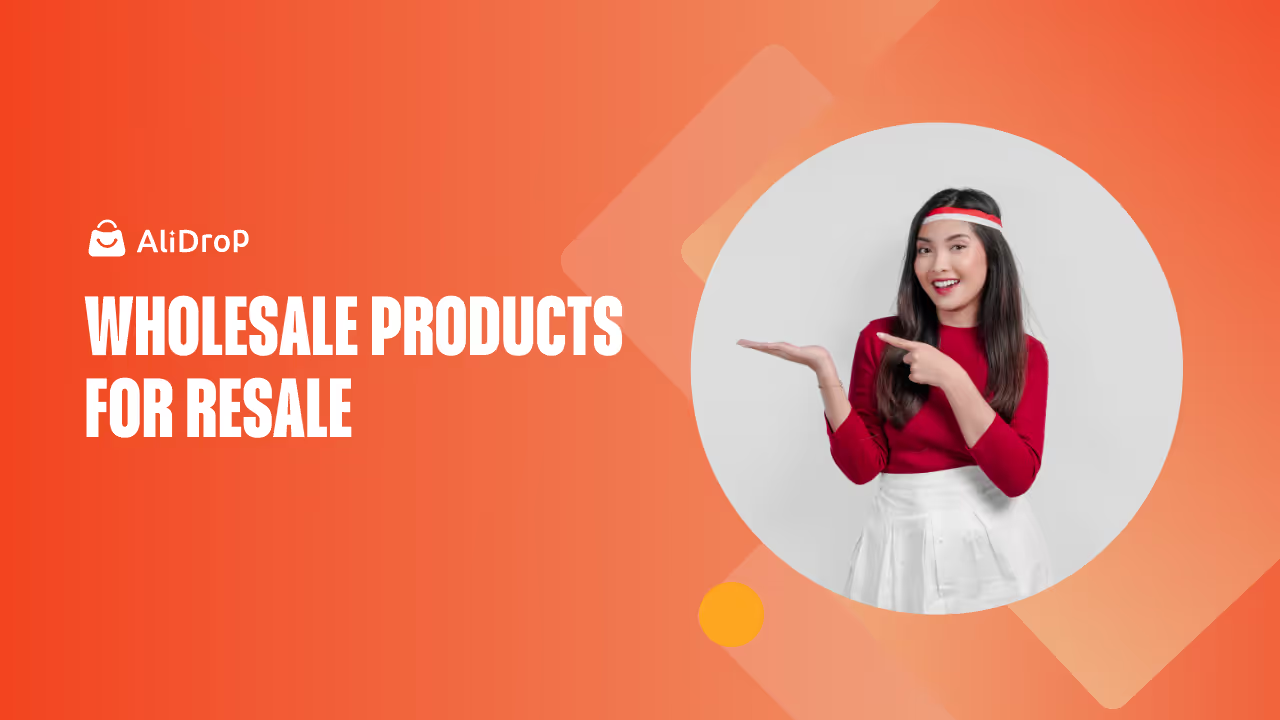Thinking about starting an e-commerce store in 2025? Well, you’re in good company! The online shopping landscape has been growing faster than ever, and the future looks bright. But, before you dive in, it’s important to have a clear roadmap. Sure, the potential is huge, but there’s also a lot to figure out—everything from choosing the right products to mastering marketing strategies.
In this guide, we’re going to walk you through the essential steps to get your e-commerce business up and running in 2025. We’ll explore everything from understanding what your customers want, to finding the right platform and setting up shop. So, whether you’re a newbie or have some experience under your belt, grab a coffee, sit back, and let’s dive into everything you need to launch your e-commerce store this year.
Selecting the Right E-commerce Business Model for 2025
Choosing the right e-commerce model will impact how you source products, how you market them, and even how you handle customer service. Let’s break down a few popular e-commerce business models for 2025.
1. B2C (Business-to-Consumer) Model
The B2C model is the most common e-commerce business model. Here, you sell products directly to consumers, either through your own website or third-party platforms. This model gives you the most flexibility in terms of brand control, customer relationships, and marketing.
Why It Works in 2025:
- Consumers are increasingly looking for brands that speak directly to their needs, and B2C businesses have the opportunity to build a direct relationship with their audience.
- With platforms like Spocket and Alidrop, you can source high-quality products directly from reliable dropshipping suppliers and ship them quickly to your customers, helping you meet the growing demand for fast delivery times.
2. B2B (Business-to-Business) Model
The B2B model involves selling products to other businesses, rather than individual consumers. This model is less common in the e-commerce world but still offers lucrative opportunities, especially if you’re able to meet the supply needs of other companies.
Why It Works in 2025:
- B2B transactions tend to be larger, meaning bigger orders and bigger profits. If you can tap into industries that need wholesale products or equipment, you can make a significant impact.
- The rise of platforms like Spocket has made it easier to connect with suppliers who offer wholesale pricing, which is crucial in the B2B model where competitive pricing is key.
3. Direct-to-Consumer (D2C) Model
The Direct-to-Consumer (D2C) model allows businesses to bypass traditional distribution channels and sell products directly to consumers. This model has gained significant traction in recent years, especially with brands that want to maintain more control over their products and customer experience.
Why It Works in 2025:
- D2C allows for greater profit margins since you’re cutting out the middleman. You can control the customer journey from start to finish, making it easier to build strong brand loyalty.
- With Spocket, sourcing high-quality, customizable products from US and EU suppliers makes it easier to build a brand that offers fast shipping and high-quality products, enhancing the customer experience and setting you up for success.
4. Subscription-Based Models
Subscription-based businesses have exploded in popularity over the past few years, especially in niches like beauty, food, health, and fitness. In this model, customers sign up to receive regular deliveries of products on a set schedule, often at a discounted rate.
Why It Works in 2025:
- Subscription models encourage repeat business, ensuring you have a steady cash flow each month. It also allows you to create loyal customers who continually engage with your brand.
- With platforms like Spocket, finding reliable dropshipping suppliers who can consistently deliver quality products on time is made easier, ensuring your subscription business runs smoothly.
Choosing the Best E-commerce Platform for 2025
When it comes to launching your e-commerce store, selecting the right platform is one of the most important decisions you’ll make. Your platform will determine everything from how easy it is to manage your store to how effectively you can scale your business. In 2025, you’ll want to choose a platform that is not only user-friendly but also adaptable to new trends, customer behaviors, and technological advancements.
Popular E-commerce Platforms to Consider
There are several platforms to choose from, but the best one for you depends on your goals, budget, and technical abilities. Here’s a rundown of the most popular options:
1. Shopify
Shopify remains one of the most powerful e-commerce platforms, offering a wealth of features designed to help entrepreneurs build and scale their businesses. It’s user-friendly, highly customizable, and integrates seamlessly with many third-party tools, including Spocket, which helps you source reliable products from US and EU suppliers.
2. WooCommerce
WooCommerce is a plugin for WordPress, making it a great option for those who are already familiar with the WordPress ecosystem. It’s a flexible, open-source platform that allows for a lot of customization, but you’ll need some technical knowledge to fully harness its power. WooCommerce also integrates easily with Spocket, allowing you to offer a variety of quality products to your customers.
3. BigCommerce
BigCommerce is another excellent platform, known for its scalability and ease of use. It’s built for both small businesses and larger enterprises, offering extensive built-in features that help streamline everything from product listings to payments. Like Shopify, BigCommerce also supports integrations with platforms like Spocket, allowing you to source high-quality products effortlessly.
4. Magento
Magento is a highly customizable e-commerce platform that’s ideal for businesses with specific needs and the resources to handle its more complex setup. If you’re looking for full control over your store’s design and functionality, Magento is a great choice. However, it requires more technical expertise, and you may need additional extensions or tools to streamline your operations.
Key Factors to Consider When Choosing an E-commerce Platform
When deciding which platform is right for you, consider the following factors:
- Ease of Use: How easy is the platform to navigate, and how much time will you need to set up and manage your store? Shopify and BigCommerce are well-known for their user-friendly interfaces, while WooCommerce and Magento may require more time and technical knowledge.
- Customization and Flexibility: Think about how much control you need over your store’s design, functionality, and features. If you want a highly customizable store, WooCommerce and Magento offer the most flexibility.
- Integration Capabilities: In today’s e-commerce landscape, having the ability to integrate with third-party tools like Spocket is crucial for product sourcing, order fulfillment, and customer management. Make sure your platform integrates easily with the tools you need to run your business efficiently.
- Scalability: Consider how well the platform can grow with your business. Shopify, BigCommerce, and WooCommerce all offer scalability, but Magento is particularly suited for larger stores that need more advanced features.
- Support and Resources: Every platform offers different levels of customer support and resources. Shopify and BigCommerce provide 24/7 customer support, while WooCommerce and Magento have large communities that can provide assistance through forums and tutorials.
Making the Right Choice for Your Store
In 2025, the e-commerce platform you choose will be one of the most important decisions you make for your business. Take your time to evaluate your needs and consider how each platform will support your long-term goals. No matter which platform you choose, make sure it’s easy to use, integrates with powerful tools like Spocket for product sourcing, and is scalable to grow with your business.
Sourcing Quality Products with AliDrop

When it comes to launching your e-commerce store in 2025, having access to reliable, high-quality products is crucial. The right product sourcing strategy directly impacts your profit margins, customer satisfaction, and retention. Poor-quality products or long shipping times can quickly lead to negative reviews and abandoned carts. This is where AliDrop comes in, offering a seamless solution for sourcing products from trusted AliExpress suppliers. Let’s explore how AliDrop can help you build a successful e-commerce store with top-quality products.
Why AliDrop?
In 2025, e-commerce customers have higher expectations than ever. They demand fast shipping, reliable quality, and excellent customer service. AliDrop makes it easy to connect with suppliers who can meet these needs. Here are some of the reasons why AliDrop should be your go-to sourcing platform:
1. Fast Shipping from AliExpress Suppliers
One of the biggest challenges with dropshipping is long shipping times. AliDrop focuses on partnering with AliExpress suppliers that offer faster delivery options, including ePacket shipping, which speeds up delivery times. By choosing products from these suppliers, you can offer quicker shipping, which helps reduce cart abandonment and increases overall customer satisfaction.
2. Curated Product Selection
Unlike other platforms that may overwhelm you with countless suppliers and products, AliDrop provides a curated selection of high-quality dropshipping products across categories like fashion, electronics, beauty, home goods, and more. This makes it easier for you to focus on finding products that match your brand and meet your customers’ needs without wading through endless options.
3. Automated Inventory and Order Management
Managing inventory manually can be a major hassle, especially when you’re working with multiple suppliers. AliDrop integrates with platforms like Shopify and WooCommerce, allowing you to automatically sync inventory levels and manage orders effortlessly. This ensures that you never accidentally sell out-of-stock items and that orders are fulfilled without issues.
4. Quality Assurance
AliDrop ensures that you’re sourcing products from trusted AliExpress suppliers with positive reviews and ratings. You can easily see the ratings and reviews of each supplier, helping you make informed decisions before listing their products in your store. AliDrop provides a reliable way to maintain high standards and protect your brand reputation.
How to Get Started with AliDrop
Starting with AliDrop is easy. Here’s a simple step-by-step guide to help you integrate AliDrop into your e-commerce business:
- Sign Up and Connect Your Store: Visit AliDrop’s website and sign up for an account. Once you're logged in, connect your e-commerce platform (like Shopify or WooCommerce) to start exploring products and suppliers.
- Browse the Catalog and Select Products: After connecting your store, begin browsing the curated catalog of products. You can filter by category, supplier location (AliExpress), or product price to find the best products for your niche.
- Import Products to Your Store: When you’ve selected the products you want to sell, simply click to add them to your store. AliDrop will automatically populate your product listings with detailed descriptions, images, and pricing, saving you time and effort.
- Set Your Pricing: Adjust the pricing of your products based on your desired profit margins. With AliDrop’s pricing automation tools, you can set rules to mark up products by a fixed percentage, ensuring consistent margins across your store.
- Start Selling and Fulfill Orders: Once your store is set up, AliDrop handles the product fulfillment. When a customer places an order, it is automatically sent to the supplier, who will ship it directly to your customer.
Designing an Engaging and User-Friendly E-commerce Website
Once you’ve chosen your products and platform, it’s time to design an e-commerce store that not only looks great but also converts visitors into customers. Your website is the face of your brand, and in 2025, customer expectations are high. A well-designed, user-friendly website can make all the difference between a one-time visit and a loyal customer.
Here’s how to create a seamless, engaging experience for your visitors:
Responsive and Mobile-Optimized Design
In 2025, more people are shopping via mobile devices than ever before. If your website isn’t optimized for mobile, you’re already at a disadvantage. A mobile-friendly website ensures that visitors have a smooth experience, no matter what device they’re using. This isn’t just about making sure your site looks good on phones; it’s about ensuring that all elements, from navigation to checkout, are designed to work flawlessly on smaller screens.
Why It’s Crucial in 2025
- Mobile commerce (or m-commerce) is booming, and it’s predicted to account for a significant portion of global sales. If your site isn’t mobile-optimized, you could be losing out on a massive chunk of potential sales.
- Having a responsive design means your website automatically adjusts to different screen sizes, providing a seamless experience for all users.
User Experience (UX) and Easy Navigation
The easier it is for customers to navigate your store, the more likely they are to make a purchase. User Experience (UX) is all about making sure that your visitors can easily find what they’re looking for, complete their purchase, and leave satisfied. The smoother the process, the higher the chances of a successful transaction.
Key UX Principles for 2025
- Clear Menu Structure: Organize your product categories in a way that’s intuitive and easy to follow. Think about your target audience’s needs and how they would naturally search for products.
- Search Bar Functionality: Make sure your search bar is easy to find and works well, so customers can quickly locate what they need.
- Speed and Load Time: A slow website can cost you sales. Aim for fast loading times (less than 3 seconds), as customers won’t wait around for a page to load.
Platforms like Shopify, combined with tools like Spocket, can help you create an optimized and responsive store quickly. Plus, Spocket’s integration allows for seamless product importing and management, ensuring that your store remains up-to-date with minimal effort.
High-Quality Product Images and Descriptions
When shopping online, customers can’t touch or try products before buying, so they rely heavily on visuals and descriptions. To drive conversions, your product images need to be high quality, and your product descriptions should be compelling.
Pro Tips for Product Images
- Use multiple images for each product, showing different angles and zoomed-in shots so that customers get a full view.
- Include lifestyle images that show the product in use, helping customers envision it in their own lives.
- Invest in high-resolution images to ensure that your products look sharp and professional.
Crafting Compelling Product Descriptions
- Focus on the benefits of the product, not just the features. Why should a customer buy this product? How will it solve their problems or improve their life?
- Use clear, concise language that’s easy to read. Avoid jargon and keep the tone conversational.
- Don’t forget to include relevant keywords for SEO to ensure your products are easily discoverable. Use an SEO product description generator to make the description SEO friendly.
Streamlined Checkout Process
A complicated checkout process is one of the biggest reasons for cart abandonment. In 2025, customers expect a quick and simple checkout experience. The fewer steps, the better. Make it as easy as possible for your customers to complete their purchase, and offer multiple payment options, including credit cards, PayPal, and digital wallets.
Tips to Improve Your Checkout Process
- Guest Checkout Option: Allow customers to check out without creating an account, though offer an easy way to sign up for future purchases.
- One-Page Checkout: Keep the checkout process on one page to minimize friction and reduce the likelihood of customers abandoning their carts.
- Secure Payment Options: Display security badges and SSL encryption icons to reassure customers that their information is safe.
Building Trust with Reviews and Testimonials
In 2025, trust is everything. Customers are more likely to buy from you if they see that others have had a positive experience. Adding reviews and testimonials to your product pages can significantly boost your credibility and help convert more visitors into buyers.
Why Reviews Matter
- Social Proof: Seeing positive reviews builds trust. Customers are more likely to buy a product with high ratings and positive feedback.
- Product Transparency: Reviews give potential customers honest insights into the product’s quality and performance, which can sway their decision.
Conclusion
In 2025, your website is not just a place for people to browse your products—it’s a powerful tool for driving sales and building long-term relationships with customers. By focusing on responsive design, providing an excellent user experience, optimizing product images and descriptions, and streamlining your checkout process, you can create an engaging store that’s ready to thrive in the competitive e-commerce space.
With the help of Spocket and Alidrop, you can source high-quality products from reliable suppliers, and with a well-designed website, you’ll be ready to offer a shopping experience that converts and builds trust.
FAQs About Launching Your E-commerce Store
What are the best platforms to use for launching an e-commerce store in 2025?
The best platforms for launching an e-commerce store in 2025 include Shopify, WooCommerce, and BigCommerce. These platforms are user-friendly, highly customizable, and integrate well with various tools like Spocket to streamline product sourcing and fulfillment.
How can I find reliable suppliers for my e-commerce store?
To find reliable suppliers, use platforms like Spocket, which connect you with US and EU suppliers offering high-quality products and fast shipping. Always check supplier reviews, ratings, and product samples to ensure quality and reliability.
Why is mobile optimization important for my e-commerce store?
Mobile optimization is crucial because a large portion of online shopping is done via smartphones. Ensuring that your e-commerce site is mobile-friendly will improve the user experience, increase conversion rates, and ultimately drive more sales.
How can I improve my e-commerce store’s conversion rate?
To improve your conversion rate, focus on creating an easy-to-navigate website, using high-quality product images and descriptions, optimizing the checkout process, and offering personalized experiences. Tools like Alidrop can help streamline product sourcing and improve order fulfillment, leading to better customer satisfaction.
How do I choose the right business model for my e-commerce store?
When choosing a business model, consider whether you want to sell directly to consumers (B2C), target other businesses (B2B), or explore subscription-based options. Each model has its benefits, and platforms like Spocket can help you find products and suppliers that suit your business model, whether it’s direct-to-consumer or B2B.























